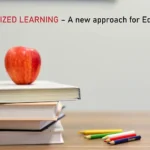In recent years, virtual reality (VR) has moved from the realm of science fiction and gaming into real-world applications, with education emerging as one of its most promising frontiers. Classrooms around the globe are beginning to integrate VR technology to enhance learning experiences, increase student engagement, and offer new ways to understand complex concepts. But how exactly is VR transforming education and is it here to stay?
A New Dimension of Learning
Traditional teaching methods often rely on textbooks, lectures, and two-dimensional visuals. While these methods have stood the test of time, they can fall short when it comes to capturing students’ imaginations or explaining abstract ideas. Enter VR: a technology that allows students to immerse themselves in 3D environments, interact with digital objects, and “experience” their subject matter firsthand.
For example, students studying ancient civilizations can now virtually walk through the streets of ancient Rome or visit the Pyramids of Giza. Biology students can explore the human bloodstream from a microscopic perspective. These experiences not only enhance comprehension but also make learning more engaging and memorable.
Improved Engagement and Retention
One of the most significant benefits of VR in education is its ability to boost student engagement. Studies suggest that immersive learning environments can improve information retention and increase motivation. When students are actively involved in their learning—rather than passive recipients—they tend to absorb and retain more information.
Gamified VR experiences can further enhance this effect. Platforms that incorporate game mechanics into educational VR programs can make even the driest subjects feel like exciting adventures.
Accessibility and Empathy
Beyond academic content, VR is also being used to promote social and emotional learning. Simulations can help students experience what life is like for people in different parts of the world, fostering empathy and global awareness. For example, a VR module might simulate life in a refugee camp, helping students understand complex humanitarian issues in a way that goes beyond textbooks or news reports.
Additionally, VR can make education more accessible for students with disabilities. Virtual field trips, for instance, can bring the world to students who might not be able to travel due to physical or financial limitations.
Challenges and Considerations
Despite its promise, VR in education comes with challenges. The cost of VR headsets and compatible devices can be a barrier for underfunded schools. There’s also the need for teacher training and curriculum development tailored to VR environments. Furthermore, prolonged VR use can cause eye strain or discomfort, making it unsuitable for extended lessons.
Privacy and ethical considerations must also be taken into account, especially when dealing with student data and immersive simulations that might impact emotional well-being.
Looking Ahead
As technology continues to advance and become more affordable, VR is likely to play an even greater role in education. Its potential to bring subjects to life, personalize learning, and build empathy makes it a powerful tool in the classroom of the future.
However, VR should complement—not replace—traditional teaching methods. When integrated thoughtfully, it can transform classrooms from passive learning environments into dynamic spaces where education comes alive.




